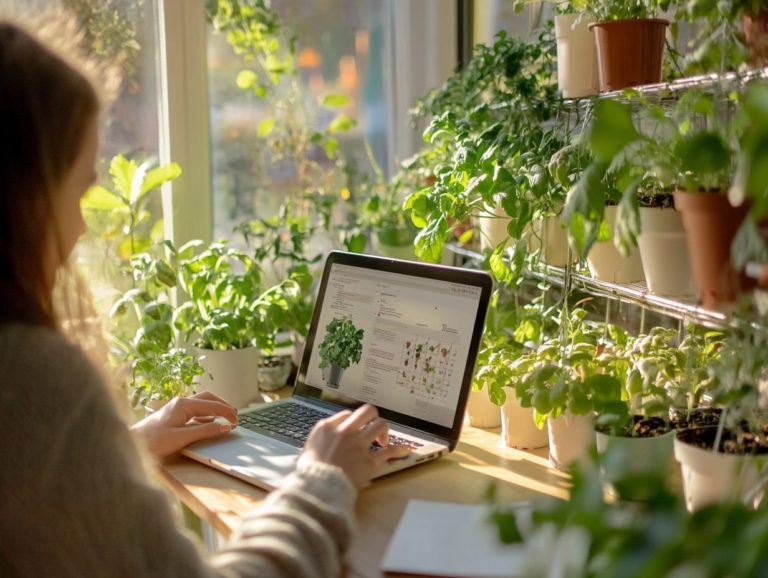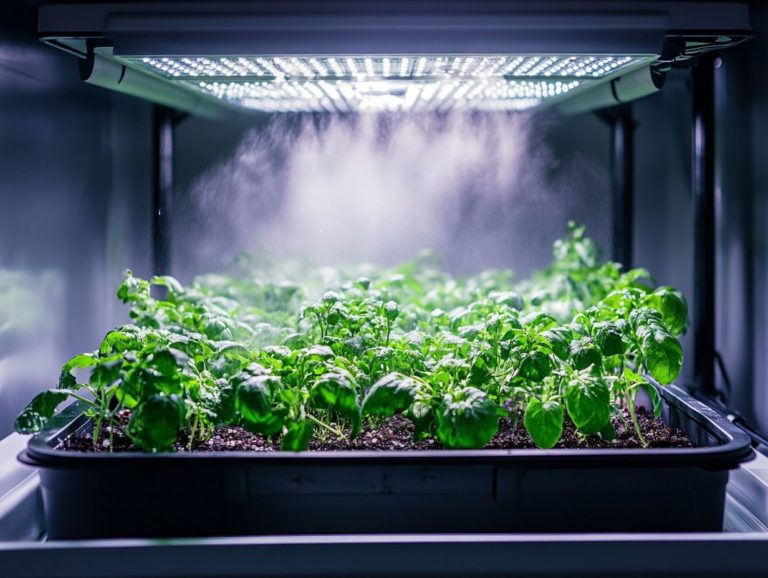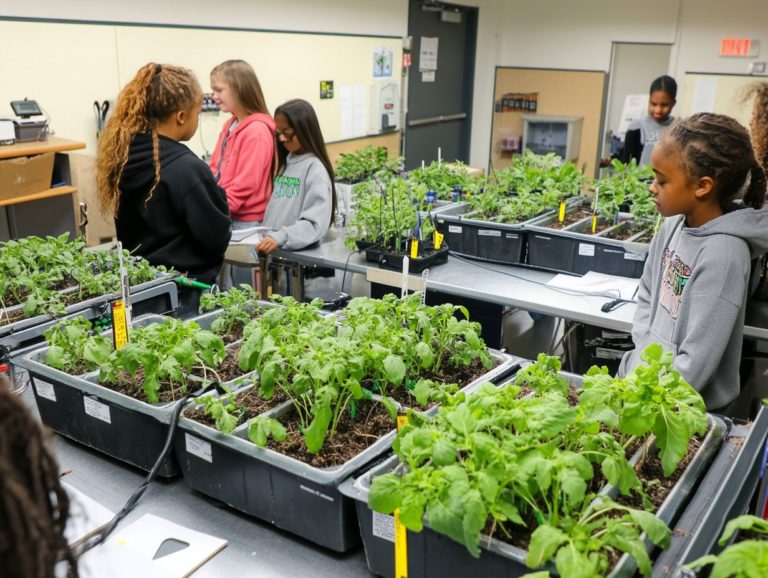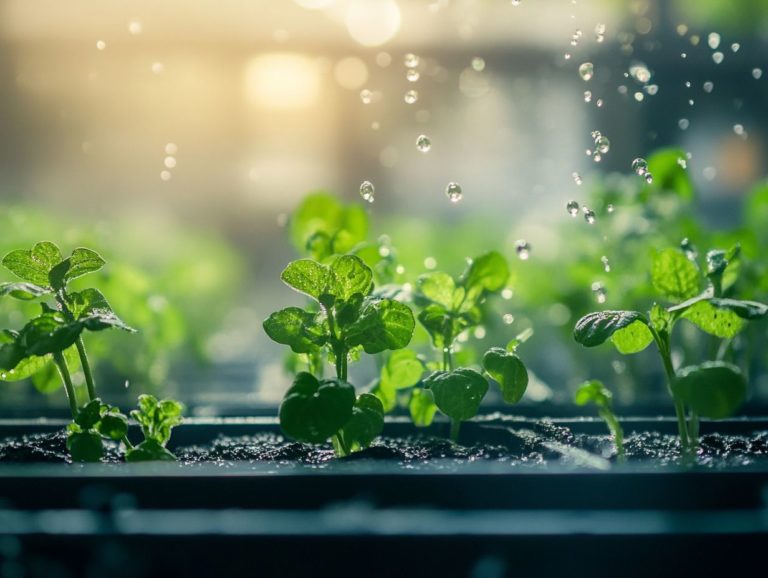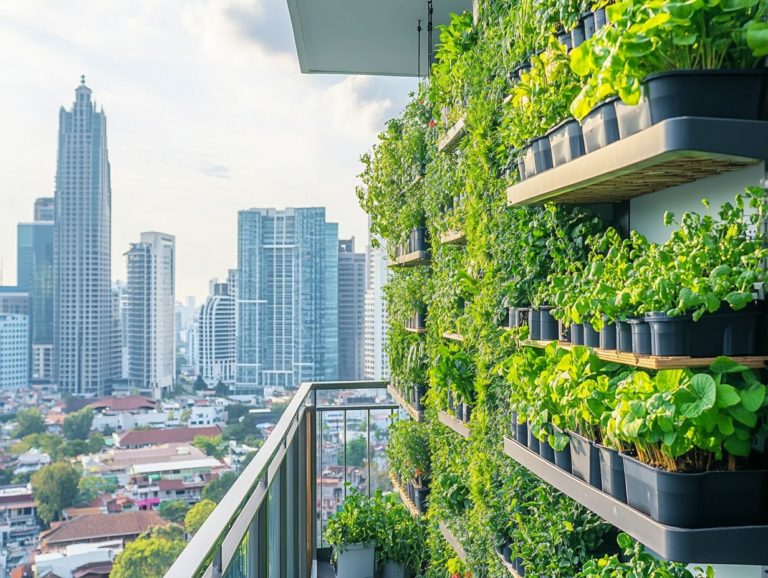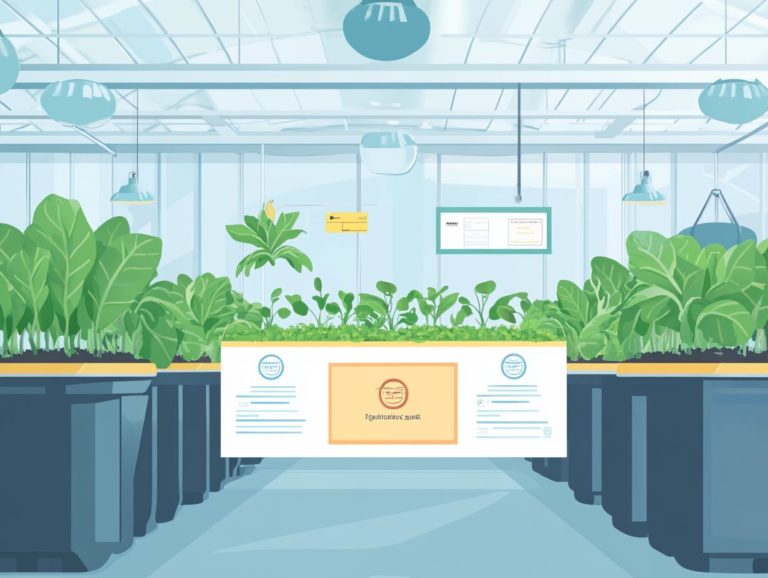How to Maintain pH Levels in Hydroponics?
Maintaining the right pH levels is essential for your success in hydroponic gardening. This article delves into the significance of pH levels, providing you with insights on how to measure them accurately using various tools and techniques.
It also examines factors that can influence pH, such as water quality and nutrient solutions, while offering practical tips for keeping those levels optimal. Let s dive in and make your hydroponic garden thrive!
Contents
- Key Takeaways:
- Measuring pH Levels
- Factors Affecting pH Levels in Hydroponics
- Maintaining Optimal pH Levels
- Troubleshooting Common pH Problems
- Frequently Asked Questions
- What is the ideal pH level for hydroponics?
- How often should I check the pH levels in my hydroponic system?
- What can cause pH levels to fluctuate in a hydroponic system?
- How do I lower pH levels in my hydroponic system?
- What should I do if the pH levels in my hydroponic system are too high?
- Are there any natural ways to maintain pH levels in hydroponics?
Key Takeaways:
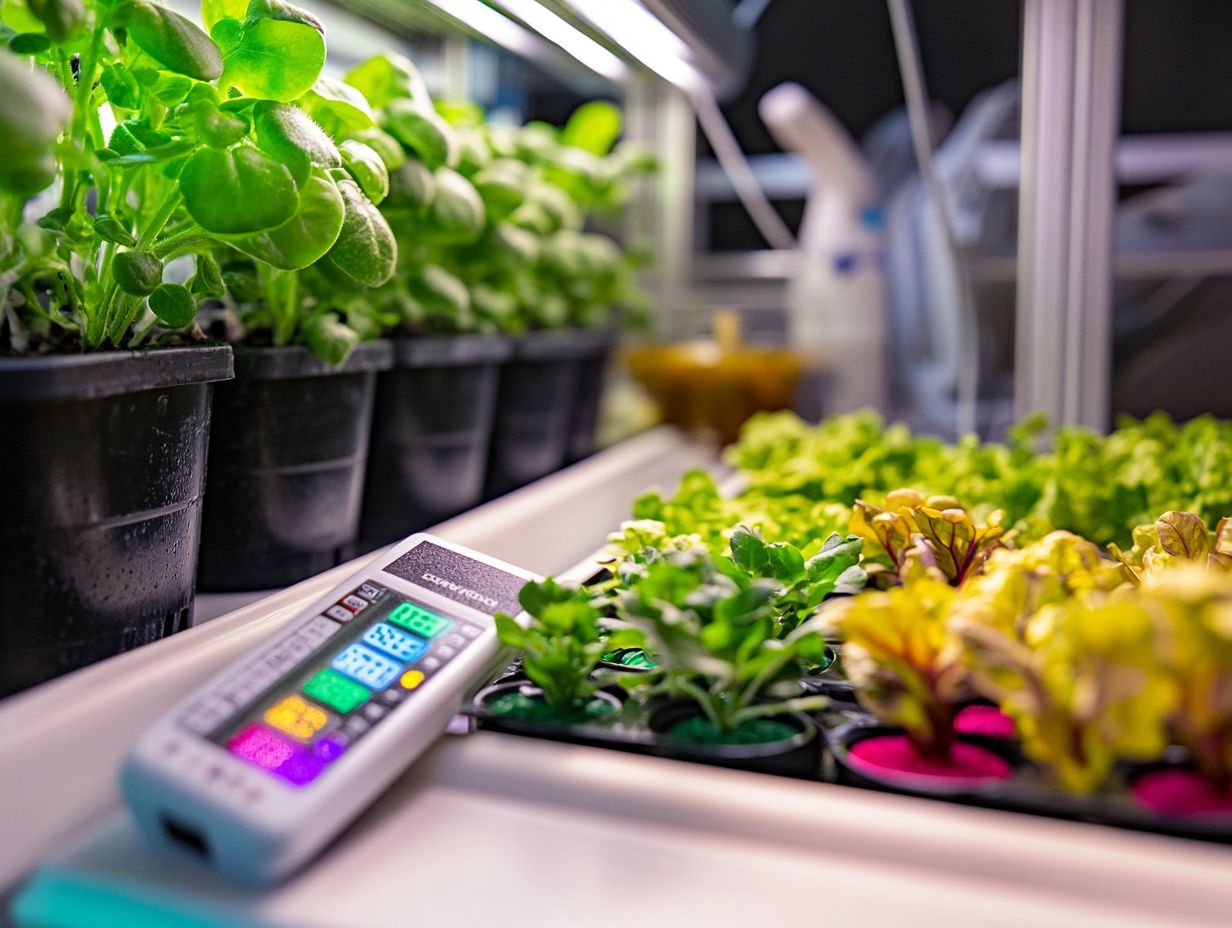
- Consistently monitoring pH levels is crucial for successful hydroponic growth.
- Water quality and nutrient solutions greatly impact pH levels and should be regularly checked and adjusted.
- Natural solutions and pH adjusters can be used to maintain optimal pH levels and troubleshoot imbalances.
Put these tips into practice today for thriving plants!
Why pH Levels are Important
pH levels are vital for your hydroponically grown plants as they directly influence nutrient availability and uptake. Maintaining optimal pH is essential because it dictates how effectively your plants can absorb the nutrients they require from the nutrient solution, ultimately influencing their growth and overall health.
A balanced pH level helps prevent nutrient deficiencies like calcium deficiency ensuring that your plants, such as tomatoes, blueberries, and kale, can thrive. Conversely, an improper pH can lead to nutrient unavailability (when plants cannot absorb nutrients despite their presence in the solution).
If the pH strays too far from the preferred range, plants like basil and peppers may experience chlorosis, characterized by yellowing leaves that hinder photosynthesis and diminish vitality. A high pH can also impede iron absorption, resulting in stunted growth, especially in plants with high iron demands.
pH fluctuations can change the nutrient solution s composition, causing certain elements to become more soluble or precipitate out under varying pH conditions.
This intricate balance underscores the importance of careful monitoring and adjustment of pH levels, ensuring that your hydroponic garden flourishes.
Measuring pH Levels
Measuring pH levels is crucial in hydroponic gardening to create a growing environment that promotes optimal plant health. By using a pH meter and testing regularly, you can keep an eye on fluctuations and make the necessary adjustments, ensuring your plants receive the nutrients they need.
A range of pH testing kits and automated systems are available to streamline this process, allowing for precise monitoring of growing conditions for crops such as melons, beans, and onions.
Tools and Techniques for Accurate Measurements
Accurate pH measurement is essential in hydroponics, and you have various tools and techniques at your disposal to achieve this. A dependable pH meter, combined with the right testing supplies, gives you the power to quickly assess the pH balance of your nutrient solutions.
By utilizing pH buffers and adjusters, you can effectively manage fluctuations and maintain your nutrient solution within optimal pH ranges for your plants, whether they are mint, kale, or peas. For more detailed guidance, refer to our resource on troubleshooting pH levels in hydroponic gardens.
If you wish to take your measurements to the next level, portable pH meters are perfect for on-the-go evaluations, while benchtop models provide higher precision in a stationary setup. When using a pH meter, remember to calibrate it regularly with standard buffer solutions to ensure accuracy.
Testing kits offer a more straightforward approach for quick assessments and can be particularly beneficial for beginners. Regardless of the method you choose, adhering to best practices such as using clean containers, taking readings at a consistent temperature, and promptly storing your testing tools will significantly enhance reliability and help maintain the critical pH balance that influences nutrient uptake and overall plant health.
Factors Affecting pH Levels in Hydroponics
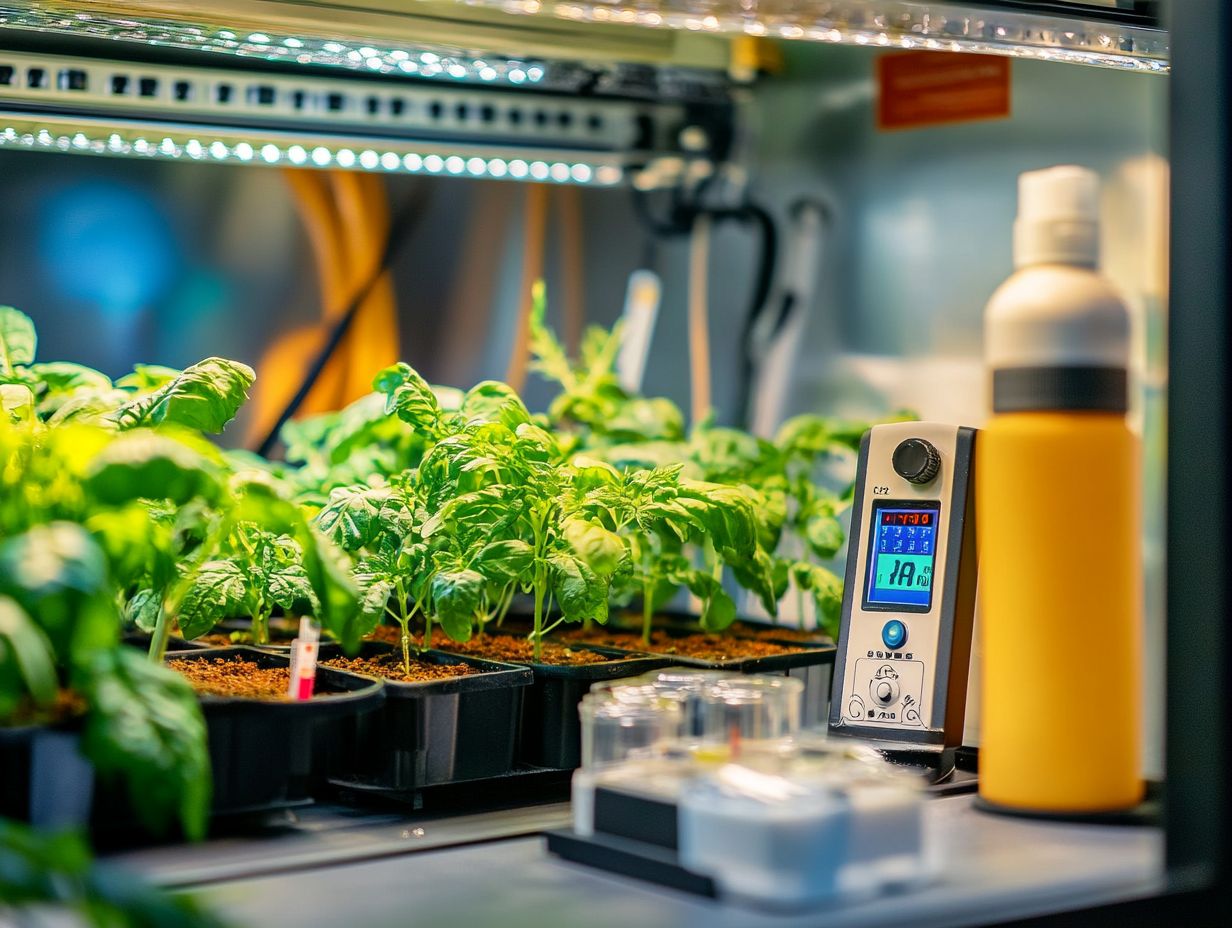
Several factors can significantly influence pH levels in hydroponics. This directly impacts plant health and how plants absorb nutrients.
The quality of your water is vital. Impurities or variations can easily disrupt pH levels.
The composition of your nutrient solutions also affects pH fluctuations. Understanding these influences is crucial for your success!
Whether you re growing squash or apples, adjusting your practices can ensure optimal growth.
Water Quality and Nutrient Solutions
Water quality is a cornerstone of successful hydroponics. It influences both pH levels and the nutrients available to your plants.
Different species have varying nutrient needs. Essential elements like calcium and magnesium rely on the purity and chemical makeup of your water.
High water quality stabilizes pH levels and boosts nutrient availability. This creates an environment where your plants can truly thrive.
As a hydroponic grower, monitor your water source and treatment closely. Contaminants disrupt the balance necessary for optimal growth.
Regular testing for impurities and adjusting your water is essential. Filtration systems can help eliminate harmful substances.
By prioritizing water quality, you enhance the health of your plants. This leads to stronger yields and exceptional growth.
Maintaining Optimal pH Levels
Maintaining optimal pH levels is essential for your hydroponic system. It directly influences nutrient uptake and overall plant health.
Regularly monitor pH levels. Use pH adjusters, like pH up and pH down solutions, to maintain the right balance for your plants’ nutrient needs.
By managing your nutrient reservoirs and pH balance, you ensure robust growth and impressive yields for crops like tomatoes and beans.
Adjusting pH Levels with Natural Solutions
Adjusting pH levels can be done using natural solutions. These tend to be safer and more sustainable than commercial alternatives.
Substances like vinegar and citric acid effectively lower pH levels. This offers an organic approach to maintaining nutrient solutions.
Using natural methods within organic growing media fosters overall plant health and growth. Alternatives like lemon juice and baking soda also provide unique benefits.
Integrate these methods into your hydroponic practices. Creating a balanced ecosystem boosts plant resilience against pests and diseases.
Choosing natural adjustments minimizes your chemical footprint. This aligns your gardening efforts with sustainable principles prioritizing environmental health and biodiversity.
Using pH Adjusters
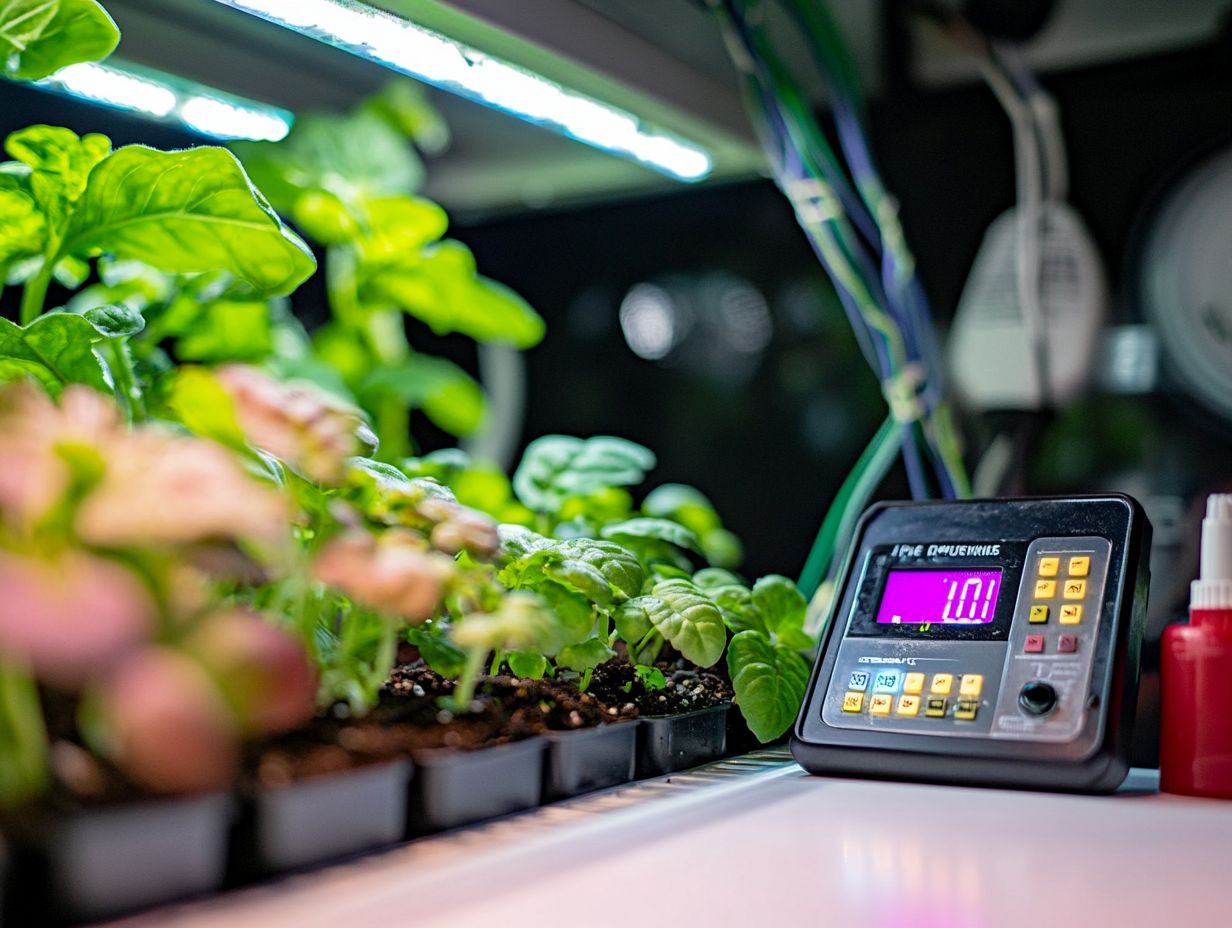
Using pH adjusters is a crucial practice in hydroponics for maintaining the ideal pH (a measure of acidity or alkalinity) levels that promote optimal plant growth. Products labeled as pH up and pH down offer a straightforward way to correct any imbalances identified through your testing equipment.
By keeping pH levels within the ideal range, typically between 5.5 and 6.5, you can enhance nutrient uptake and maximize plant vitality. For more detailed insights, refer to our guide on understanding pH levels in hydroponic nutrients. Choosing the right pH adjuster hinges on the specific needs of your plants and the baseline pH of your nutrient solution.
Employing precise testing equipment is essential. Constant monitoring enables you to make timely adjustments to ensure your growing environment remains conducive to healthy development. Incorporating these practices will supercharge your plant health, leading to more robust yields and overall success in your hydroponic venture.
Troubleshooting Common pH Problems
Troubleshooting common pH problems is essential for ensuring the health of your hydroponically grown plants. Fluctuations in pH can lead to significant nutrient deficiencies and other complications that can jeopardize your yield.
One prevalent concern is calcium deficiency, often stemming from an unbalanced pH level. This deficiency can manifest in various plants, such as squash and kale. Ultimately, this can result in suboptimal growth. Staying vigilant about pH levels gives you the power to cultivate thriving plants.
Identifying and Addressing Imbalances
Identifying and addressing pH imbalances in hydroponics is essential to prevent issues like nutrients being unavailable, which can significantly impede plant growth. By regularly monitoring pH levels with reliable testing kits, you can catch fluctuations early and respond effectively.
Understanding how to adjust pH within your nutrient reservoirs allows you to create a healthy environment for your plants, ensuring that crucial nutrients remain accessible. To manage pH levels effectively, look for signs of imbalance in your plants health.
Yellowing leaves, stunted growth, or browning root tips are red flags that indicate adjustments might be necessary. You can adopt regular monitoring techniques by taking daily pH readings and maintaining detailed records.
This practice helps you spot trends and make timely interventions. Utilizing pH buffers or acids can swiftly correct imbalances, allowing your plants to resume optimal nutrient uptake.
Thus, consistent vigilance and proactive management are vital components in cultivating a thriving hydroponic system that meets the nutrient requirements of your hydroponically grown plants.
Frequently Asked Questions
What is the ideal pH level for hydroponics?
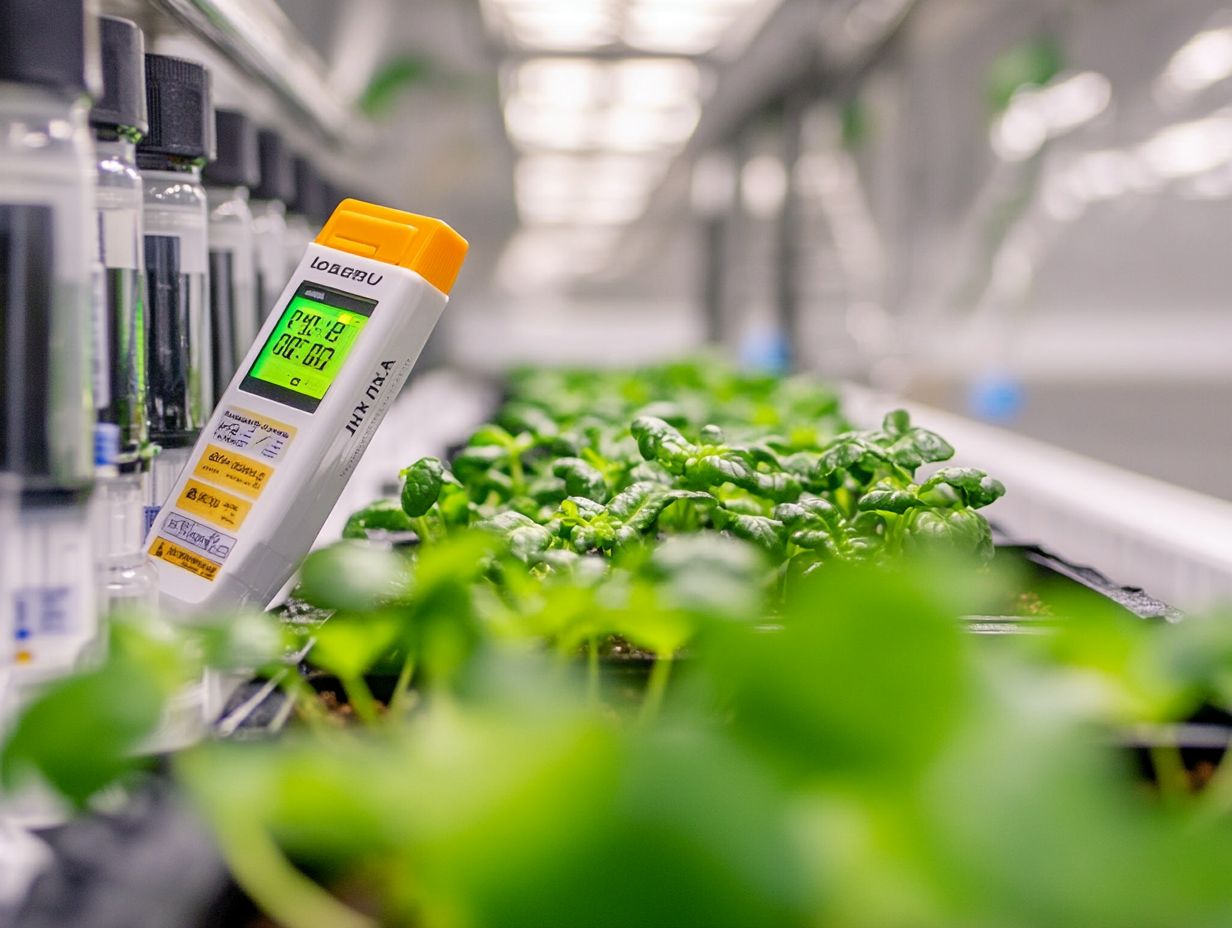
The ideal pH level for hydroponics is between 5.5 and 6.5. This range allows for optimal nutrient uptake by plants and promotes healthy growth.
How often should I check the pH levels in my hydroponic system?
It is recommended to check the pH levels in your hydroponic systems at least once a day. However, the frequency may vary depending on the size and type of your system.
What can cause pH levels to fluctuate in a hydroponic system?
pH levels in a hydroponic system can fluctuate due to various factors, including changes in nutrient composition, plant uptake, and water quality. It is important to regularly monitor and adjust pH levels to maintain a stable environment for your plants.
How do I lower pH levels in my hydroponic system?
To lower pH levels in a hydroponic system, you can add a small amount of citric acid or phosphoric acid to the nutrient solutions. It is important to add these acids slowly and gradually to prevent drastic changes in pH levels.
What should I do if the pH levels in my hydroponic system are too high?
If the pH levels in your hydroponic system are too high, use potassium hydroxide (a chemical that can lower pH) or potassium bicarbonate (baking soda). Add these slowly to avoid too much change at once.
Are there any natural ways to maintain pH levels in hydroponics?
You can maintain pH levels in hydroponics naturally. Consider using nutrient solutions that keep pH stable, adding organic materials like compost or worm castings, and adjusting your water with natural pH buffers like limestone or oyster shell.

